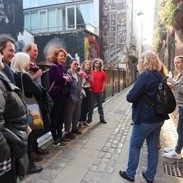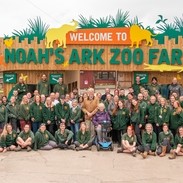Content marketing
VisitBritain/Jacob Niblett

What is content marketing?
Why do I need it?
Your website needs content to make it interesting, relevant and engaging to visitors. Creating and promoting quality content should be an important part of your digital marketing. A simple content marketing strategy helps you plan out the different content you want to create and post throughout the year. These regular updates will keep your website feeling fresh and interesting.
Using images and video for content marketing
Visual content is proven to help people remember up to 55% more effectively than with relying on just listening alone (Dr John Medina).
The right visuals can:
Make your website more attractive and memorable;
Help tell the story of your brand and business;
Encourage sharing of your website pages on social media;
Help with search engine rankings (if tagged correctly – see below).
The right photographs
You might choose to have professional photos taken, or take them yourself. You could also connect your feeds from social media platforms such as Instagram, Twitter, YouTube, TikTok and Vimeo to automatically update your site with images you’ve added to your social media channels. See the Social Media section for more.
Note: images which are too big can slow your website down, while poor quality images will make your website look untrustworthy. Read Image SEO: How Images Impact Search Engine Rankings below for more.
Using videos
YouTube is a good place to start if you’re thinking of using videos in your marketing. You can upload video content and embed it into your website. Find out more about YouTube in our Social Media section. Making videos is more time-consuming than taking photographs and you may need a digital marketing budget to employ a professional. If you’re starting out, you might want to begin with photography and progress to video when you have more understanding and skills, time or budget.
Alt text know-how
When you use visual elements on your site, it is important to use alternate text, also known as Alt text or Alt tags. These are text tags which describe the content of that image or video. They are mainly used by search engines, but can also help with accessibility (for example, users who employ screen readers). All Content Management System (CMS) platforms include the facility to add Alt text when you upload an image.
Black Country Living Museum
“Think about what is really distinctive about your business and try and capture it and emphasise it via your various channels. For us, it’s the historic appearance of the museum’s outdoor site, as well as our costumed characters.”
Images and videos content marketing checklist
Think about how you will use images to tell the story of your business: people, place, products, services and more.
Consider employing a professional if you don’t feel confident taking your own photos or filming videos. You’ll need to factor this into your digital marketing budget.
Check that any imagery isn’t copyrighted and that you aren’t using a stock photo that your competitors also have on their site.
Tag images with Alt text to improve searchability and accessibility.
Images and video content resources
Image Search Engine Optimisation (SEO): Optimising images for search engines
Learn how to boost your SEO with Yoast’s useful strategies for content optimisation.
Using images legally online
Understand copyright and how to use images legally, with Search Engine Journal’s advice.
The importance of images on a website
Discover why images are so vital to the success of your site, from a digital marketing perspective, with Carmelon Digital Marketing’s guide.
How to take your own business photos
Learn how to take high-quality photos yourself, with Web Ascender’s guide to the basics.
Hotel photography tips to increase direct bookings
Get a D.I.Y. guide to taking quality hotel photographs, with eviivo’s helpful tips.
Why images are important for your website strategy
Read more on the value of images for your business, from YellowPages for Business.
Visual content marketing statistics you should know
Read visual content marketing statistics from HubSpot, highlighting why and how the right images help your business.
Lucy Green, Exmoor Character Cottages
Getty Images/Mark Easement Photography

“We’ve been recording our own podcasts since March 2021. We use them to promote Exmoor – the countryside, things to do in the area, local personalities and producers, and other businesses that we think our visitors would be interested in.”
“We’ve interviewed farmers, shop keepers, musicians, artists, chefs – basically if they love Exmoor as much as we do, we’ll do it! We get from 100 to 1,500 listens per podcast and now have almost 25,000 in total. It’s a big investment and requires technical skills, so they’re not for everyone – but for me, the real selling point is that they’re a really natural form of communication. They’re a fantastic way to communicate our values, our interests and our local expertise as a business.”
Lucy Green, Exmoor Character Cottages
Using blogs for content marketing
What is a blog?
A blog is a regularly-updated section or page on a website, similar to an online journal, magazine or diary.
Why have one?
Blogs can add useful, timely information and stories to help your site appear more authoritative and deepen readers’ understanding of your brand. You could use your blog to answer common questions, help customers understand something, or solve problems.
Every time you write a blog, it creates another page a search engine can index, increasing your site’s visibility. Once posted, blogs remain visible until you remove them: this kind of ‘evergreen’ content can be very useful. It’s always worth updating any old blog posts to prevent them from being lost from search engine rankings.
Why blogs help your business
Blogging regularly tells search engines your website is active, and encourages it to check back for updates.
Blogging can provide your users with local expertise and insider tips.
Informative blog posts are often shared via social media, exposing your business to more readers and more potential customers.
Blogs are a good way to include a ‘Call to Action’ (CTA) – a clickable button or link designed to engage users with your site; for example, making a booking or answering a survey.
Blogs content marketing checklist
Consider how much time you will have to blog – it’s more effective to post regularly, even if the entries are short.
Research other blogs as inspiration for topics to cover.
It’s worth updating older blog posts to keep them fresh to searchable.
Blogs content marketing resources
What is a Call to Action (CTA)?
Learn what a CTA is and how to use them with The Balance’s guide.
Why blog? The benefits of blogging for marketing
Read why blogging can help businesses, with this article from HubSpot.
How to curate content for your blog
Learn how to curate content the right way, with Tourism eSchool’s post.







